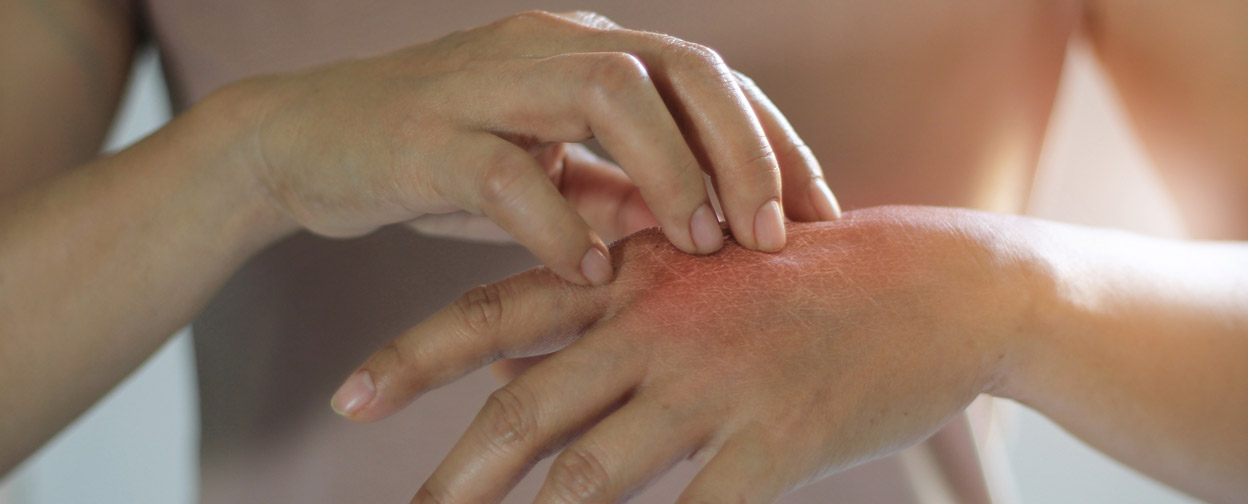September 18, 2019
The Truth about Nickel Allergies

Would you believe that keys, jewelry, zippers, buttons, eyeglasses, pens, kitchen utensils, coins, tools, computers, door knobs, food, and even some makeup can contain nickel?
That little factoid generally won’t come up unless you or a loved one has a nickel allergy, which is a leading cause of allergic contact dermatitis.
This allergic reaction typically occurs where the nickel touched your skin but occasionally shows up elsewhere. Symptoms develop within two days of the nickel contact and can include:
- Rash
- Mild to severe itching
- Skin swelling
- Dry skin patches
- Blisters that may crust over
If you experience severe symptoms such as warm skin, pain, increased redness, or pus-filled areas, you must take off anything that could be causing the reaction and visit an allergist quickly to prevent or treat an infection.
People frequently report that their nickel allergy came out of the blue. A jewelry piece they wore for years suddenly caused discomfort, only to find out they now have an allergy. Unfortunately, this allergy tends to stick around for life once it develops.
An allergist can perform a skin patch test to ensure you are correctly diagnosed. You’ll have tiny amounts of nickel and other potential allergens placed on your back, where they will stay for 48-72 hours. The doctor will then examine each area for redness or irritation, which can indicate an allergy.
Many home remedies and medications can help you fight contact dermatitis under the guidance of your allergist. Over-the-counter and prescription options include hydrocortisone cream, antihistamines, and steroids.
Once you get your skin under control, it’s time to figure out how best to avoid nickel going forward. This is easier said than done considering it’s used in so many items we come in contact with daily. Some pro tips to get you started:
- Buy a nickel test kit. Readily available in stores and online, these can quickly detect whether or not items contain nickel.
- Be choosy about your jewelry. It will cost more that the costume stuff but will almost certainly stand the test of time. Look for surgical-grade stainless steel (not the same as regular stainless steel), sterling silver, platinum, titanium, or 24-karat yellow gold. White gold is out since it frequently includes nickel.
- If you just can’t part with a few nickel-containing jewelry or clothing items, put a barrier between your skin and the nickel. You can try clear nail polish, but make sure you reapply it after every few uses. There are also liquid barriers intended specifically for this purpose.
- When you do go clothes shopping, pay close attention to all of the zippers, buttons, snaps, etc. Bring along the nickel test kit to ensure nothing will be irritating when you get home.
- For any new body piercings, ensure they are done with nickel-free or surgical-grade stainless steel tools. Verify the nickel content of the jewelry they pierce with.
- Plastic or titanium eyeglass frames are fashionable alternatives that do not contain nickel.
- Look for plastic, leather, or cloth watch bands.
- Ensure that your kitchen utensils and tools do not contain nickel.
- If you are highly sensitive to nickel, talk to your allergist about how you can avoid as many foods that contain nickel as possible. Chocolate, legumes, nuts, oatmeal, and canned foods are at the top of the avoidance list.
- Tell your dentist and other medical professionals about your nickel allergy. Nickel is used in dentistry, orthodontics, and medical devices.
Adverse nickel reactions in these fields are relatively rare, but it’s an important conversation to have.
With an expert allergist in your corner, a sound strategy in place, and a determination to minimize nickel exposure, consider yourself prepared to kick itchy nickel rashes to the curb for good.